

MUHASABAHLAH WAHAI UMMAH

The fighting, which first Sunday evening, left at least 156 people dead and more than 1,000 wounded, according to the state news agency. Chinese officials did not give a breakdown of the deaths, and it was unclear how many of them were protesters and how many were other civilians or police officers.

Caught between rival rioters, the Chinese paramilitary police faced off with Han Chinese.

The first wave of Han Chinese protesters engaged in a brick-throwing battle with Uighurs who had taken to the rooftops of the neighborhood, while paramilitary troops watched.

Chinese soldiers in riot gear ran after a Han Chinese crowd in Urumqi.

Armed crowds of Han Chinese broke through a paramilitary police line trying to attack Uighur areas in Urumqi. Efforts by the city's leading Communist Party official to calm the crowd resulted only in inflaming the Han protesters' anger.

The troops later fired tear gas from cannons atop armored personnel carriers to push back the Han protesters, who carried clubs, lead pipes, shovels and meat cleavers.

Uighur protesters interrupted a state-run tour of the riot scene for foreign and Chinese journalists on Tuesday.

Hundreds of Uighurs marched down a wide avenue Tuesday with raised fists, tearfully demanding the release of Uighurs who they said had been seized from their homes after the violence Sunday.

Uighur men carried away a woman who had fainted during the disruption of the reporters' tour. As journalists watched, the demonstrators also smashed the windshield of a police car. The entire crowd was eventually encircled by officers and paramilitary troops in riot gear.

A wailing crowd of Uighur women led the march, grieving for the men they claimed were taken away by Chinese authorities after Sunday's protest in Urumqi. About 1,400 people are said to have been detained since the Sunday riots.

In midafternoon, however, thousands of furious Han Chinese, armed with simple hand weapons, marched from a central square, South Gate, toward the main Uighur neighborhood, where the riots had begun on Sunday.

The state news agency, Xinhua, reported that many neighborhood stores were closed, their food and bottled water sold out. A heavy paramilitary police presence enforced an overnight traffic curfew, putting the city into virtual lockdown.

A Uighur man with his jaw bandaged after what he said was an injury sustained during the rioting. A wide variety of government policies has for years led many of the area's 10 million Uighurs to believe their culture and livelihoods are threatened.

Injured Han Chinese men at the Urumqi Friendship Hospital. More than 1,000 people were wounded Sunday in riots that began as a protest over government handling of a brawl between Uighur and Han factory workers in southern China.

Security forces on patrol in Urumqi. Chinese officials deny that government policies contributed to the ethnic unrest.

A local woman on a crutch confronted soldiers Tuesday on a street in the city of Urumqi. Rival protesters took to the streets again on Tuesday, defying Chinese government efforts to lock down the city and other places across the Xinjiang Uighur Autonomous Region after deadly riots Sunday night.

The Chinese government visibly strengthened the police and military presence Wednesday on the streets of Urumqi, the capital of China's Xinjiang Uighur Autonomous Region, on Wednesday. Unrest on the region has grown since a riot on Sunday in which 156 people died.

A Uighur man watched as a truck full of Chinese security forces patrolled the streets of Urumqi. The rioting has been the worst ethnic violence in China in decades.

Chinese paramilitary police officers on patrol in Urumqi.

Security officers kept watch as Han Chinese walked near a billboard featuring a joyful crowd of minorities. The Chinese president, Hu Jintao, cut short his stay in Italy, where he had planned to attend a Group of 8 summit meeting, to deal with aftermath of the riots.

Uighurs waited with sticks behind a roadblock in their neighborhood in Urumqi. Though Uighurs are about half the population in Xinjiang, they are a minority in the regional capital.


 The fighting, which first Sunday evening, left at least 156 people dead and more than 1,000 wounded, according to the state news agency. Chinese officials did not give a breakdown of the deaths, and it was unclear how many of them were protesters and how many were other civilians or police officers.
The fighting, which first Sunday evening, left at least 156 people dead and more than 1,000 wounded, according to the state news agency. Chinese officials did not give a breakdown of the deaths, and it was unclear how many of them were protesters and how many were other civilians or police officers. The first wave of Han Chinese protesters engaged in a brick-throwing battle with Uighurs who had taken to the rooftops of the neighborhood, while paramilitary troops watched.
The first wave of Han Chinese protesters engaged in a brick-throwing battle with Uighurs who had taken to the rooftops of the neighborhood, while paramilitary troops watched. Armed crowds of Han Chinese broke through a paramilitary police line trying to attack Uighur areas in Urumqi. Efforts by the city's leading Communist Party official to calm the crowd resulted only in inflaming the Han protesters' anger.
Armed crowds of Han Chinese broke through a paramilitary police line trying to attack Uighur areas in Urumqi. Efforts by the city's leading Communist Party official to calm the crowd resulted only in inflaming the Han protesters' anger. The troops later fired tear gas from cannons atop armored personnel carriers to push back the Han protesters, who carried clubs, lead pipes, shovels and meat cleavers.
The troops later fired tear gas from cannons atop armored personnel carriers to push back the Han protesters, who carried clubs, lead pipes, shovels and meat cleavers. Uighur protesters interrupted a state-run tour of the riot scene for foreign and Chinese journalists on Tuesday.
Uighur protesters interrupted a state-run tour of the riot scene for foreign and Chinese journalists on Tuesday. Hundreds of Uighurs marched down a wide avenue Tuesday with raised fists, tearfully demanding the release of Uighurs who they said had been seized from their homes after the violence Sunday.
Hundreds of Uighurs marched down a wide avenue Tuesday with raised fists, tearfully demanding the release of Uighurs who they said had been seized from their homes after the violence Sunday. Uighur men carried away a woman who had fainted during the disruption of the reporters' tour. As journalists watched, the demonstrators also smashed the windshield of a police car. The entire crowd was eventually encircled by officers and paramilitary troops in riot gear.
Uighur men carried away a woman who had fainted during the disruption of the reporters' tour. As journalists watched, the demonstrators also smashed the windshield of a police car. The entire crowd was eventually encircled by officers and paramilitary troops in riot gear. A wailing crowd of Uighur women led the march, grieving for the men they claimed were taken away by Chinese authorities after Sunday's protest in Urumqi. About 1,400 people are said to have been detained since the Sunday riots.
A wailing crowd of Uighur women led the march, grieving for the men they claimed were taken away by Chinese authorities after Sunday's protest in Urumqi. About 1,400 people are said to have been detained since the Sunday riots. In midafternoon, however, thousands of furious Han Chinese, armed with simple hand weapons, marched from a central square, South Gate, toward the main Uighur neighborhood, where the riots had begun on Sunday.
In midafternoon, however, thousands of furious Han Chinese, armed with simple hand weapons, marched from a central square, South Gate, toward the main Uighur neighborhood, where the riots had begun on Sunday. The state news agency, Xinhua, reported that many neighborhood stores were closed, their food and bottled water sold out. A heavy paramilitary police presence enforced an overnight traffic curfew, putting the city into virtual lockdown.
The state news agency, Xinhua, reported that many neighborhood stores were closed, their food and bottled water sold out. A heavy paramilitary police presence enforced an overnight traffic curfew, putting the city into virtual lockdown. A Uighur man with his jaw bandaged after what he said was an injury sustained during the rioting. A wide variety of government policies has for years led many of the area's 10 million Uighurs to believe their culture and livelihoods are threatened.
A Uighur man with his jaw bandaged after what he said was an injury sustained during the rioting. A wide variety of government policies has for years led many of the area's 10 million Uighurs to believe their culture and livelihoods are threatened. Injured Han Chinese men at the Urumqi Friendship Hospital. More than 1,000 people were wounded Sunday in riots that began as a protest over government handling of a brawl between Uighur and Han factory workers in southern China.
Injured Han Chinese men at the Urumqi Friendship Hospital. More than 1,000 people were wounded Sunday in riots that began as a protest over government handling of a brawl between Uighur and Han factory workers in southern China. Security forces on patrol in Urumqi. Chinese officials deny that government policies contributed to the ethnic unrest.
Security forces on patrol in Urumqi. Chinese officials deny that government policies contributed to the ethnic unrest. A local woman on a crutch confronted soldiers Tuesday on a street in the city of Urumqi. Rival protesters took to the streets again on Tuesday, defying Chinese government efforts to lock down the city and other places across the Xinjiang Uighur Autonomous Region after deadly riots Sunday night.
A local woman on a crutch confronted soldiers Tuesday on a street in the city of Urumqi. Rival protesters took to the streets again on Tuesday, defying Chinese government efforts to lock down the city and other places across the Xinjiang Uighur Autonomous Region after deadly riots Sunday night. The Chinese government visibly strengthened the police and military presence Wednesday on the streets of Urumqi, the capital of China's Xinjiang Uighur Autonomous Region, on Wednesday. Unrest on the region has grown since a riot on Sunday in which 156 people died.
The Chinese government visibly strengthened the police and military presence Wednesday on the streets of Urumqi, the capital of China's Xinjiang Uighur Autonomous Region, on Wednesday. Unrest on the region has grown since a riot on Sunday in which 156 people died. A Uighur man watched as a truck full of Chinese security forces patrolled the streets of Urumqi. The rioting has been the worst ethnic violence in China in decades.
A Uighur man watched as a truck full of Chinese security forces patrolled the streets of Urumqi. The rioting has been the worst ethnic violence in China in decades. Security officers kept watch as Han Chinese walked near a billboard featuring a joyful crowd of minorities. The Chinese president, Hu Jintao, cut short his stay in Italy, where he had planned to attend a Group of 8 summit meeting, to deal with aftermath of the riots.
Security officers kept watch as Han Chinese walked near a billboard featuring a joyful crowd of minorities. The Chinese president, Hu Jintao, cut short his stay in Italy, where he had planned to attend a Group of 8 summit meeting, to deal with aftermath of the riots._logo.svg.png)






















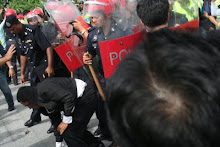






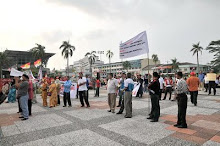
















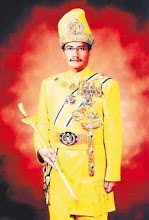





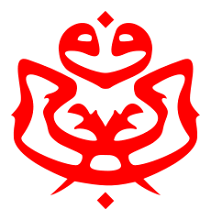_logo.svg.png)
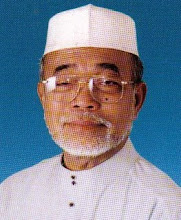





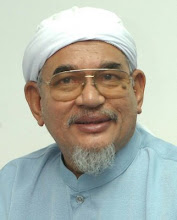



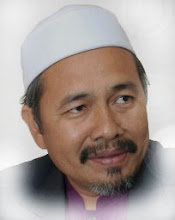












Sorry but i was just wondering why your blog are full with pictures very subtlely and deliberately portraiting the Uighurs to be the victim, where in actual fact,they were the one started the riots & the killing of innocent Han ? Why ? what rights do they have to expect to be let go scot-free after committing these heinous barbaric actions ? No any right-minded government in this world will allow this except maybe Indonesia ? Why are you not posting any pictures of the hundred of Han victims, those innocent Han killed just merely because they were in the wrong place at the wrong time ?...Your action is no different from the CNN...very sad
ReplyDeleteSalam....
ReplyDeleteSaya tidak bermaksud untuk mempotretkan Uighurs sebagai mangsa tetapi setiap masalah itu haruslah dilihat daripada mana punca datangnya.
Katakan saya datang ke rumah anda, saya menguasai segala yang ada di rumah anda. Sehinggakan saya yang membuat peraturan tentang jadual hidup anda sekeluarga. Bagaimanakah perasaan anda?
Adakah anda akan bergembira dengan tindakan saya itu? Adakah anda hanya akan berdiam diri? Atau adakah anda akan naik marah dan hilang sabar?
Jika anda hilang sabar dan mengambil tindakan memukul dan menghalau saya daripada rumah anda, adakah tindakan anda itu betul? Sudah tentu betul bukan? Kerana kediaman itu milik anda.
Adakah anda patut dipersalahkan di atas tindakan anda memukul saya itu? Sudah tentu tidak bukan?
Anda adalah Uighurs yang merupakan pemilik kediaman itu manakala saya pula adalah Han yang datang dan menguasai segala galanya.
Begitulah perumpamaanya. Sesuatu kejadian itu dinilai bukanlah atas apa yang berada di depan mata tetapi adalah punca kenapa kejadian itu berlaku.
Maaf jika pandangan kita berbeza teapi itulah hakikatnya.
Anda fikirlah sendiri.